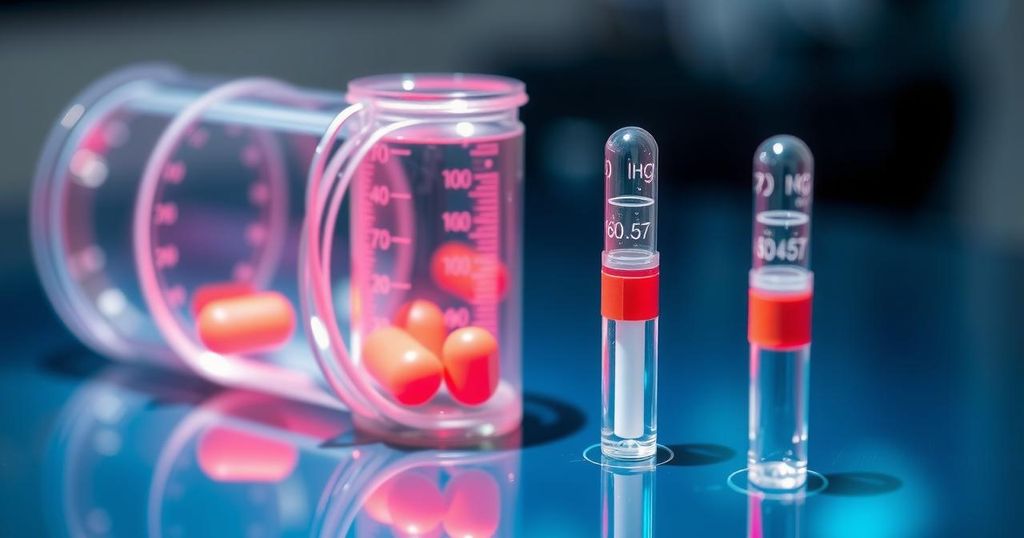Innovative Trends in Drug Delivery Devices: Shaping the Future of Healthcare
Technological advancements are revolutionizing drug delivery devices in response to the growing prevalence of diabetes and cardiovascular diseases. With increasing focus on patient compliance, personal therapies, and sustainability, innovation ranges from smart insulin pens to robotic pills aimed at enhancing medication management. Ongoing trends reflect the transition towards homecare therapies and the integration of smart tech into healthcare delivery systems, ensuring a transformative impact on patient engagement and outcomes.
In the ever-evolving landscape of healthcare, technological advancements in drug delivery devices are making waves, primarily driven by the rising need for enhanced patient compliance, superior therapeutic results, and bespoke treatments. As conditions like diabetes and cardiovascular diseases proliferate, there’s a surge in demand for innovative, minimally invasive methods. Projections from the International Diabetes Federation reveal that by 2045, the number of diabetics globally could soar by 48%, underlining the urgency for advanced drug delivery solutions tailored for these patients.
U.S. manufacturers are rallying around this challenge, crafting devices ranging from cutting-edge continuous glucose monitors to smart insulin pens aimed at improving patient outcomes. Monitoring regional diabetes statistics helps companies tailor their products to areas most affected, ensuring they meet specific health needs, thus sustaining alignment with global health trends.
Key trends reshaping the injectable drug delivery systems market include the development of ultra-cold storage solutions for mRNA vaccines that require temperatures as low as -70°C. Companies like Raumedic are innovating with silicone components resilient to extreme temperatures down to -90°C, which is within the demands of modern medical packaging. Meanwhile, as populations age, there’s a growing necessity for homecare therapies, ultimately pushing manufacturers to adapt medical devices for personal use outside traditional hospital settings.
Digitally enhanced tools, such as wearable insulin pumps, offer patients improved mobility, juxtaposing the need for comfort and unobtrusiveness when delivering medication. Aesthetically pleasing designs and smaller, less noticeable devices bolster patient adherence, creating a more engaging health management experience. Furthermore, the infusion of smart technologies into drug delivery systems heightens functionality, allowing real-time monitoring and data sharing. This integration not only equips patients with vital information but also transforms simple devices into complex, tech-savvy healthcare tools.
The focus on sustainability is reshaping manufacturing practices, emphasizing eco-friendly materials and resource-efficient processes while adhering to strict regulatory environments. Companies are striving for manufacturing methods that emphasize lower emissions and resource conservation, aligning themselves with directives promoting corporate sustainability.
Recent innovations have dramatically changed how chronic diseases like diabetes are managed through automated systems such as Tandem Diabetes Care’s insulin delivery devices, empowering patients to take control of their health. Alongside this, smart insulin pens are revolutionizing treatment through real-time data capabilities. These advancements stem from an increasing prevalence of chronic complaints and technological strides pushing personalized medicine forward.
Developments in women’s health, highlighted by innovations like Nestorone gel and micro patch technologies, echo the unique requirements of female patients, emphasizing the importance of targeted drug delivery methods. Notably, disparities in funding for women’s health research calls for a greater focus owing to the significant unmet needs and the complexities of female-specific conditions.
Oral medication delivery remains the frontrunner for its ease and safety, with cutting-edge research enhancing release technologies using nanoparticles to improve drug absorption through the gastrointestinal tract. Emerging solutions like the “robotic pill,” designed to enable greater control over medication release, are making oral drug administration more effective and user-friendly. Addressing the numerous challenges in creating optimal oral dosages is crucial to improving patient compliance and overall therapeutic experiences—weaving together innovation with practical application to fulfill comprehensive healthcare needs.
As these advancements unfold, the path toward future drug delivery systems seems promising, paving the way for a healthcare realm that places a premium on patient-centricity and efficacy. With continuous exploration and research, the landscape of oral and injectable drug delivery devices will only broaden, fundamentally enhancing the quality of life for many.
The landscape of drug delivery devices is seeing rapid transformation driven by technological advancements aimed at meeting the growing demands of patients with chronic conditions, particularly diabetes and cardiovascular diseases. With predictions of increasing global diabetes rates and the rising complexity associated with biologic drug treatments, there is a pressing need for user-friendly, efficient drug delivery systems. Many manufacturers are innovating to create devices that not only provide better therapeutic outcomes but also cater to the convenience and comfort of patients, reflecting a significant shift towards personalized healthcare solutions. Additionally, factors such as the aging population and the boisterous environment of home care therapy are influencing trends in the market, demanding continuous adaptation of medical device technologies.
In summary, technological innovation in drug delivery devices is rapidly evolving to meet the challenges posed by chronic diseases like diabetes and cardiovascular conditions. Companies are focusing on developing user-friendly, efficient, and sustainable solutions that facilitate better patient engagement and compliance. The integration of smart technology and new materials into drug delivery systems is transforming the way therapies are administered, ultimately enhancing the quality of care. As the industry continues to respond to shifting demands, it remains crucial to ensure that these advancements equate to improved patient outcomes and accessibility to effective treatments.
Original Source: www.grandviewresearch.com




Post Comment